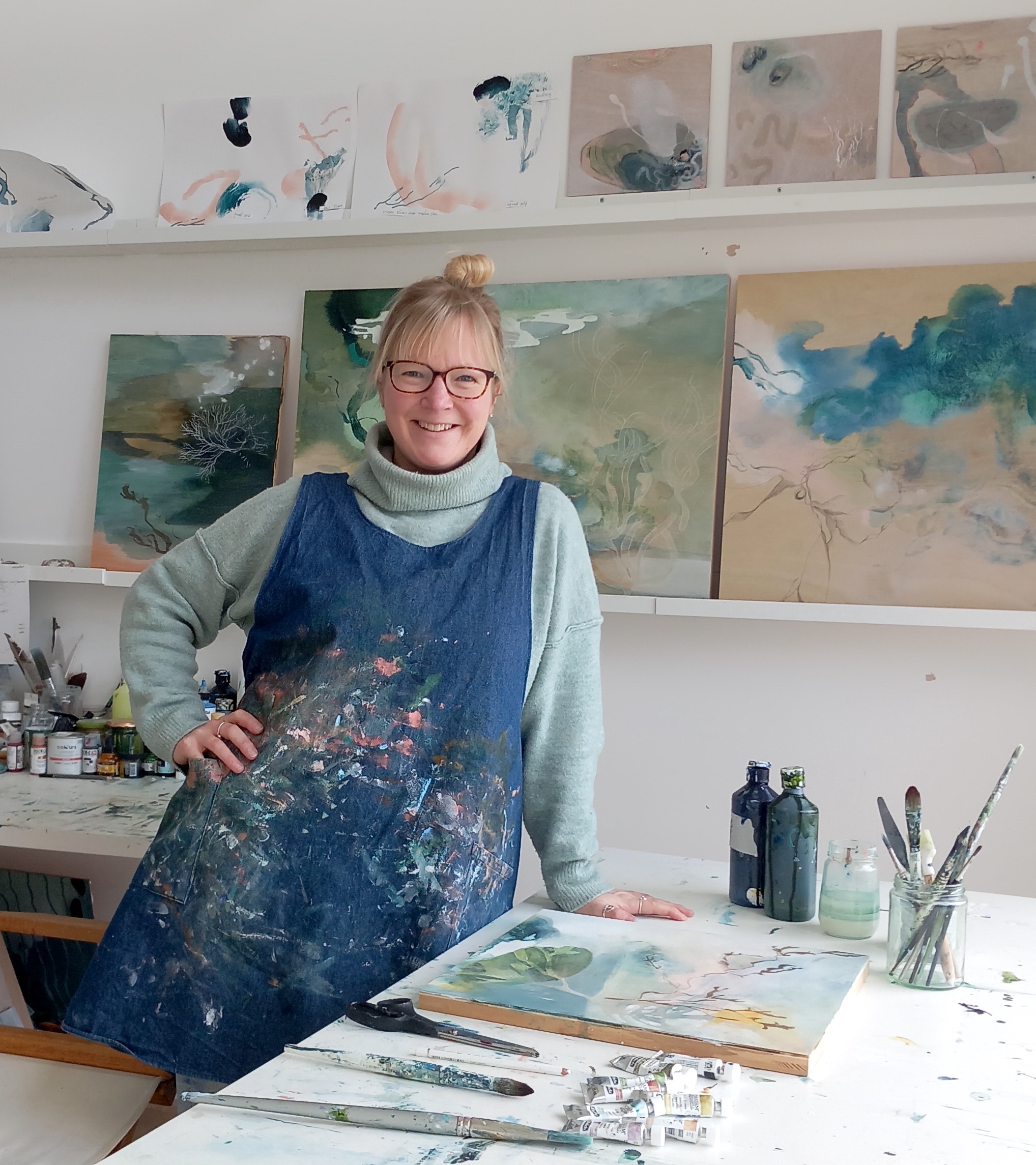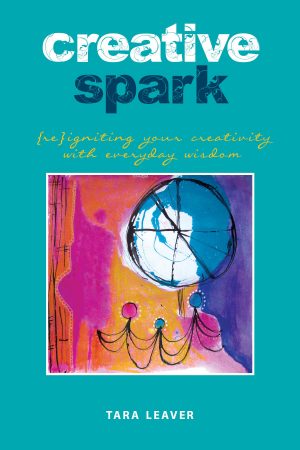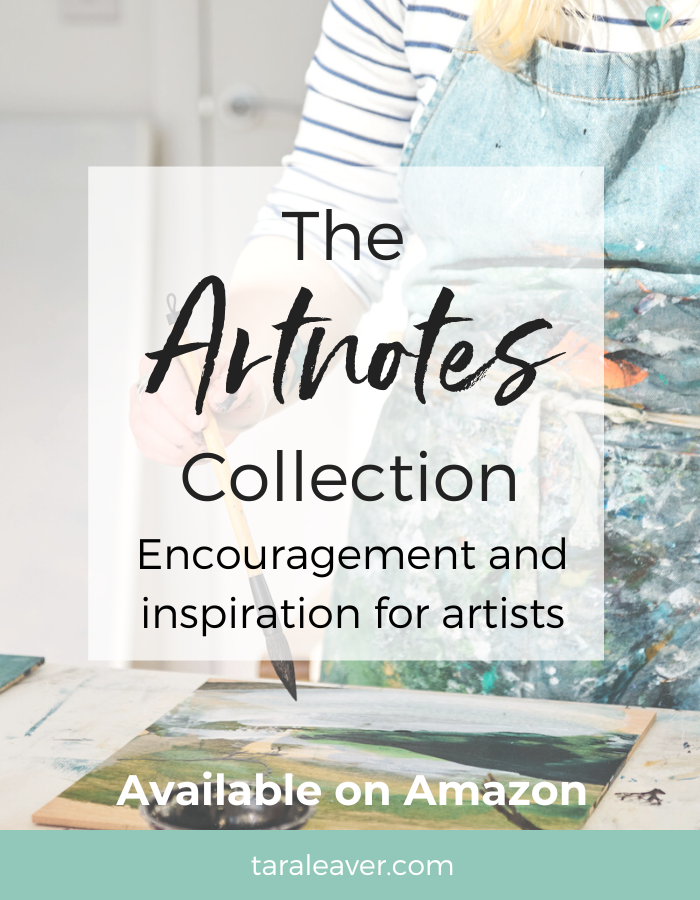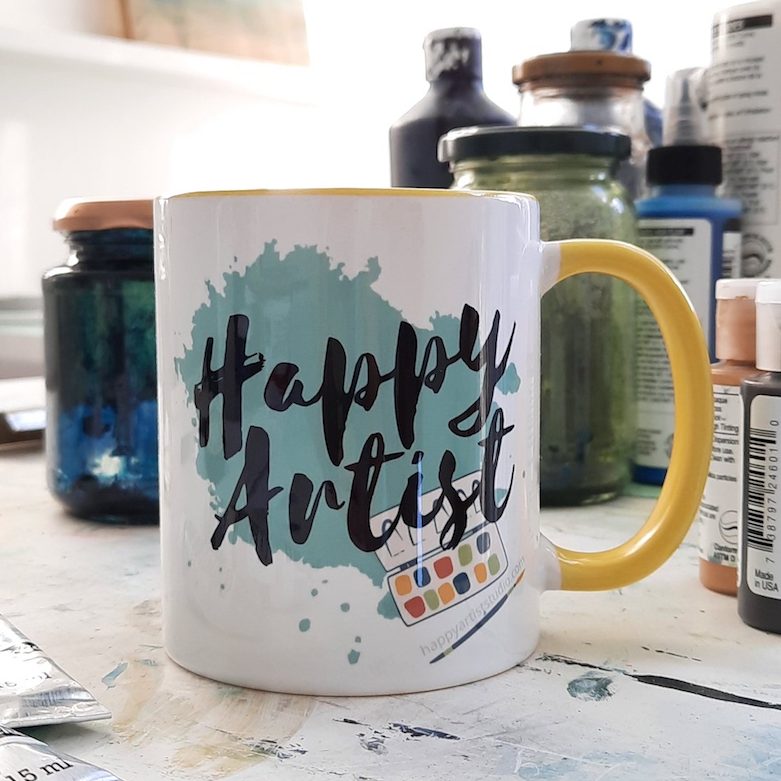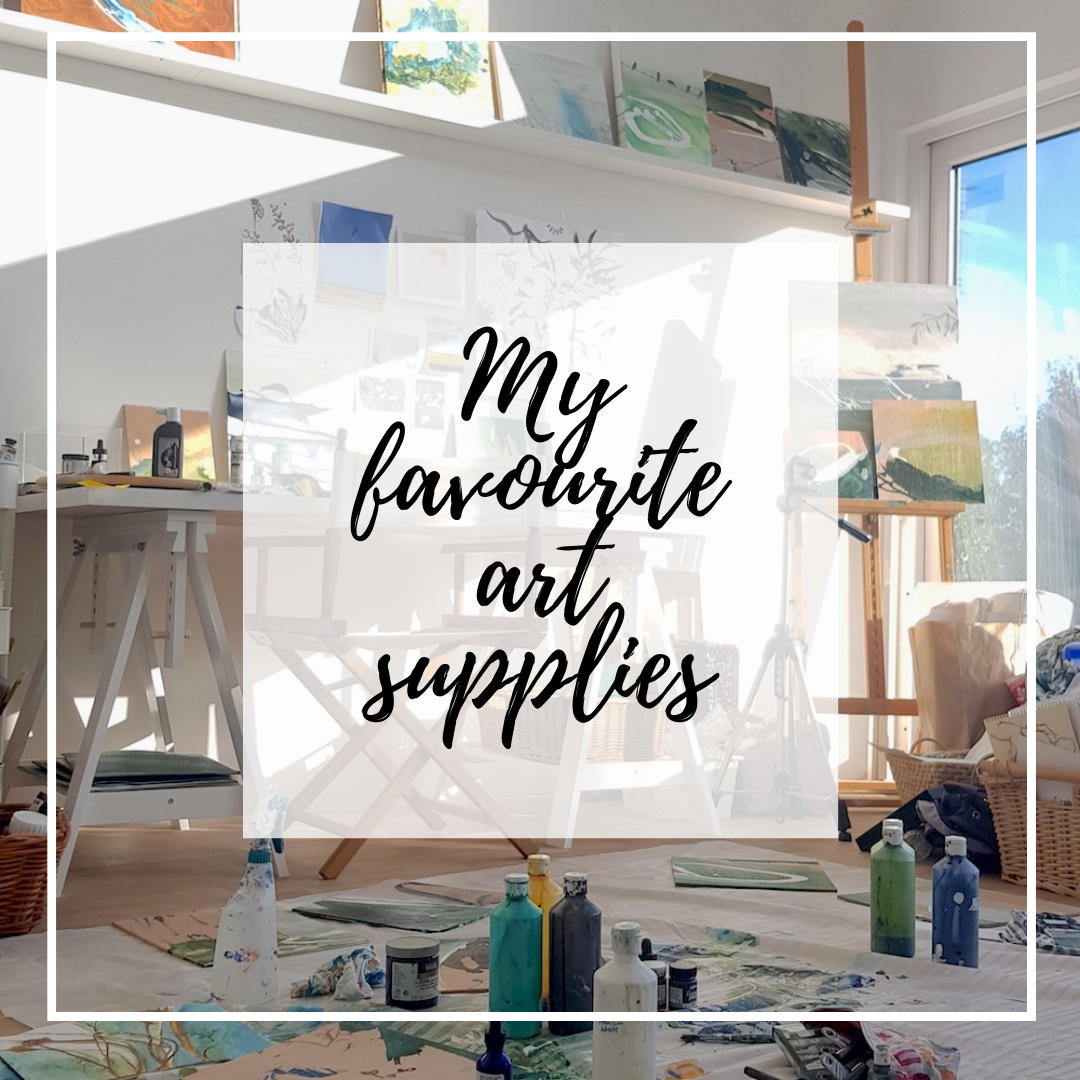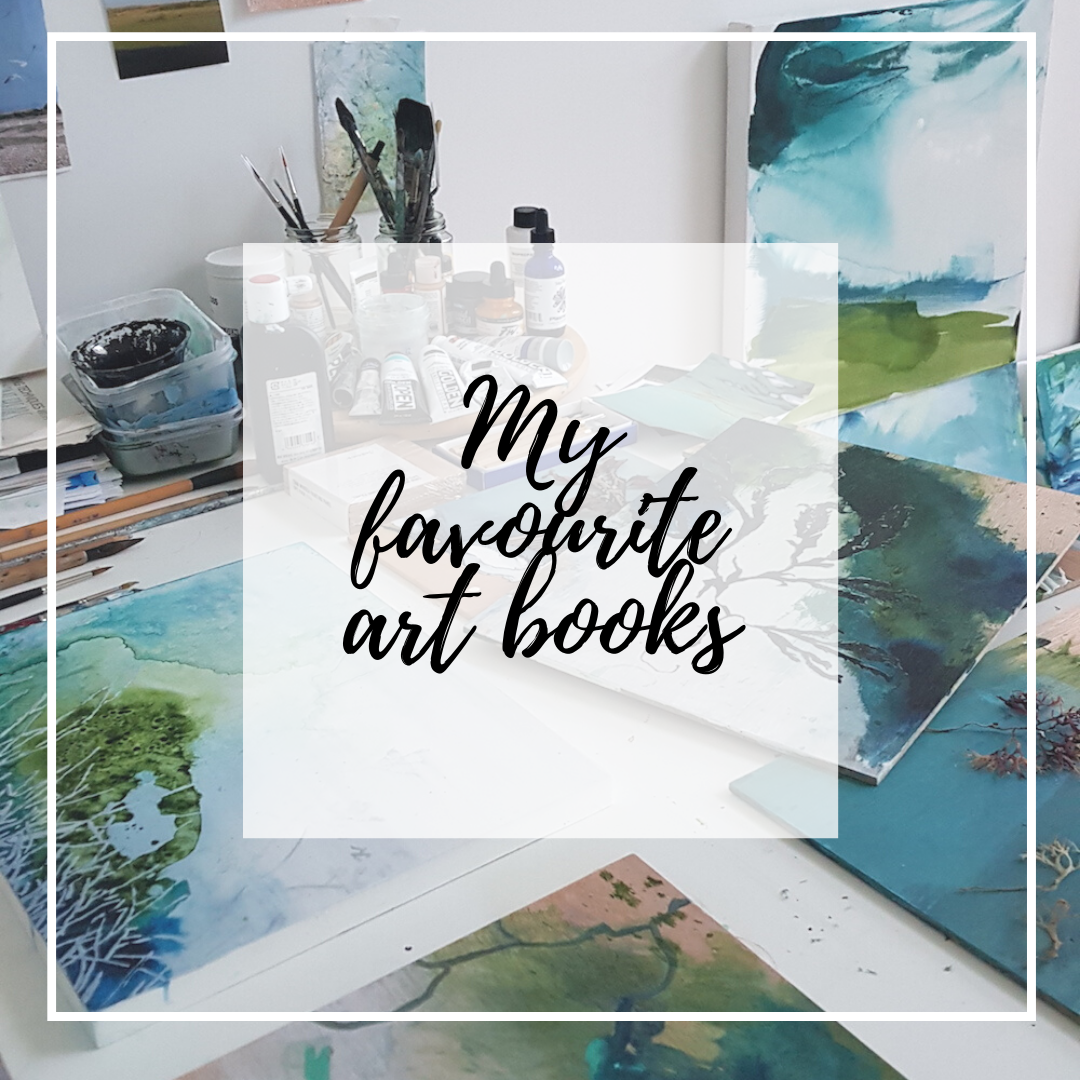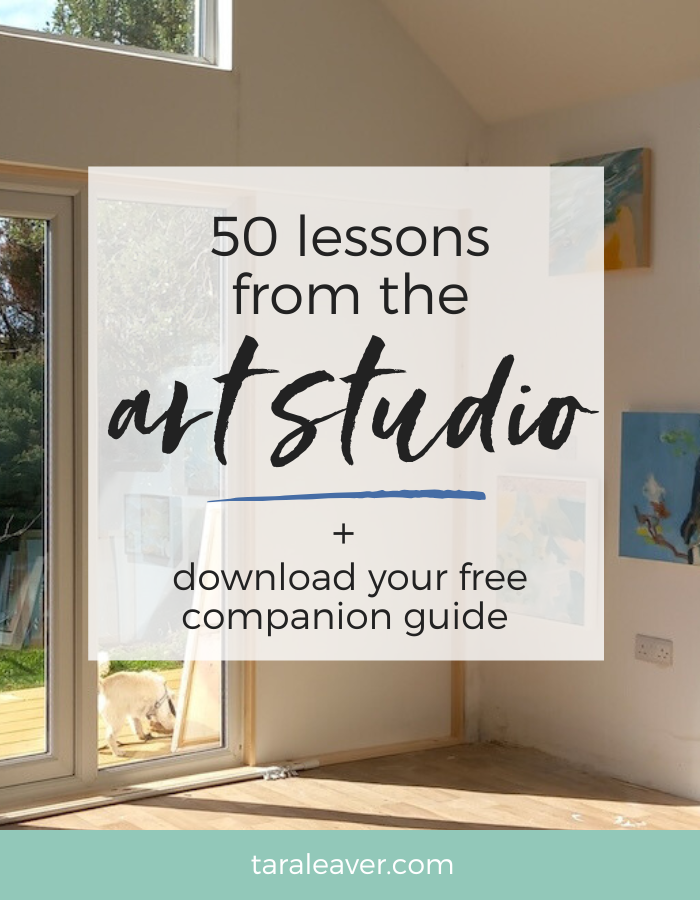
One of my favourite things about being an artist is that, no matter how long you’ve been doing it, there are always lessons from the art studio available, every time we go in there to create.
I often think that just as the paintings teach me how to paint them, by being someone who identifies as an artist, I get to learn all about what that means – for me.
Because there are plenty of rules out there that will tell you what to do or not do in order to be ‘allowed’ to be an artist.
I’ve tried a lot of things that were a bad fit for me.
I’ve made tons of mistakes, errors of judgement, and done things I rather wish I hadn’t, in the name of my art.
And I’ve learned things that have proved to be guiding lights for me along the path – even the ones I didn’t particularly want to learn!
I’m sharing 50 of those lessons from the art studio here with you today, in hopes that they might be helpful to you, even if they’re simply reminders of what you already know.
Some you may not even agree with – obviously completely fine.
These are my learnings, not Ultimate Truths.
My ethos has always been encouragement over critique, and normalising things that don’t seem to get talked about a lot in kind and constructive ways, but I’ve gained some sharp clarity over the years, so you may also find a little feistiness in this list. 😉
Sometimes a gentle shake up is helpful too!
As always, take what helps and leave the rest.
And if you’d like a free guided companion version of all 50 lessons from the art studio, including prompts to generate your own insights and discoveries, click here, or pop your details in the form at the bottom of this post!
So here, in no particular order, are 50 lessons from the art studio of a passionate, practising, happy artist, that have helped me grow {and that I might have liked to have known sooner!}:
1. Being able to call yourself an artist isn’t important; making your art is.
2. That said, being able to call yourself an artist is a milestone many of us need to hit because of all the conditioning we carry about what an artist is and who’s allowed to be one.
3. Make it for you, first. Always always always make your art for yourself. You can think about who else might like it later.
4. You don’t need a degree or any other formally recognised qualification to be an artist. You can just be one. All artists are to some extent self taught anyway.
5. There are as many different ways to be an artist as there are people who want to be artists {probably more}. You get to cultivate your way, and it doesn’t have to look exactly the same as anyone else’s. In fact it’s best if it doesn’t.
6. Social media is not going to fill whatever gap you perhaps unconsciously want it to fill. It’s not there to provide you with validation, self esteem, sales, or popularity {although it can, temporarily}. It’s a business that doesn’t care about you and your dearly held dreams. That doesn’t mean you can’t use it to your advantage; just make sure you’re very clear on your values, expectations, and intentions for using it. Use those as a touchstone to return to.
7. If you look to others for validation as an artist, you’re putting yourself on shaky ground. And you can absolutely cultivate that validation within yourself. {Start with this!}
8. Surround yourself with people who talk about art and being an artist in uplifting, encouraging, inspiring ways. Not just because that’s a more pleasant experience, but because those are the people who are going where you want to go. Complaining can release tension, but it tends not to lead anywhere fulfilling.
9. If you don’t make art for a while – where a while could be a week, six months, or 20 years – if you’ve made art, you love making art, you make art now, and/or you will be making art in the future, you’re an artist.
10. Don’t ask for art advice from people who aren’t artists. Even if you love them and they love you.
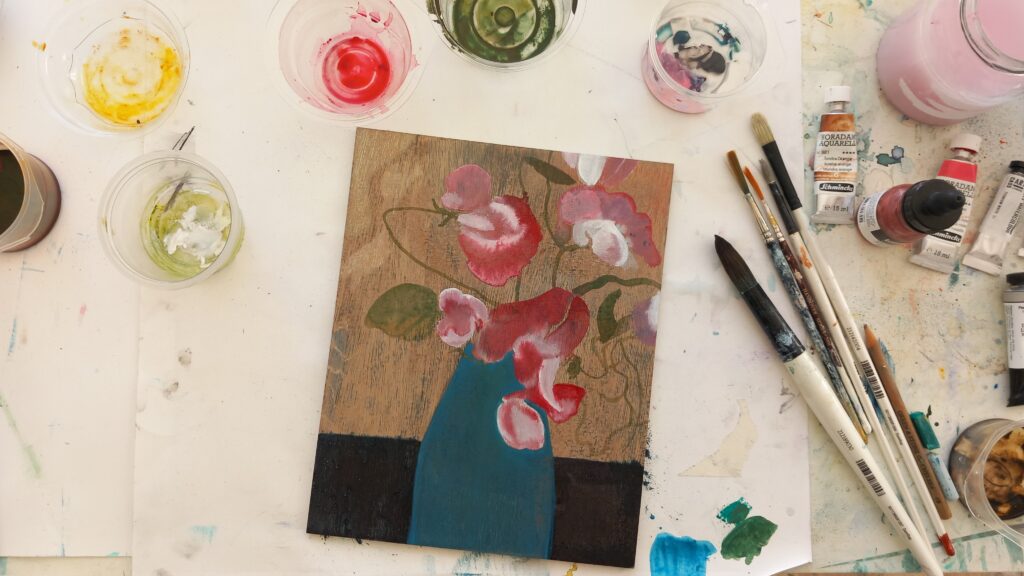
11. Choose your mentors carefully. Not all artists are the same just because they’re artists.
12. Your art doesn’t have to make a statement, be controversial, be large, be realistic, be obviously narrative, or any other specific way to be ‘proper art’.
13. There is no one right way to be ‘successful’ as an artist. Start with defining success for yourself {because it might not actually be some version of 6 figures and fame – it might be much more to do with quality of life, time to make art and do things with your loved ones, and may not even have anything to do with selling at all}. Then build accordingly.
14. If you’re going to make a living as an artist, you’re going to need more than one income stream. This provides more security in terms of income, and keeps things interesting for your lively creative brain.
15. You can be an artist and other things too.
16. If you’re early days {and that can mean early years}, let go of worrying about what your ‘style’ is. For one thing, if you keep creating it will make itself known without you having to force it. For another – and you may not agree but this is what I’ve seen over and over again – style is transient. Voice is permanent. So if you’re going to focus on anything, focus on developing your voice, and it will strengthen and become increasingly distinctive over time.
17. You can totally do this – uncover and develop your voice – by trying a million different styles of art. In fact, I recommend it! Keep them private if you’re copying, or attribute if you’re sharing, and don’t sell that work. Use it to teach yourself what feels true to you, and what doesn’t.
18. You’re not scattered or all over the place. You’re a curious creative being – that’s what an artist {and human} is – so embrace it and enjoy all the things you enjoy. If time is a bigger issue than feeling you should be narrowing down, see number 36!
19. Support other artists, whether that’s by cheering on artist friends, buying the work of other artists, encouraging them on social media, or creating courses to help them with what you know. Artists are generous folk, and it’s uplifting and fulfilling to be part of a community that supports each other. Plus, it helps eliminate any feelings of envy that can come up from time to time.
20. Get really good at self kindness. You’re going to need it when you’ve been procrastinating on making your art for days or weeks in a row, or when you’re stuck on a piece and don’t know what to do, or when your work wasn’t selected for an opportunity, or someone said something that hurt, or when you’re thirteen layers deep into your current painting and it’s an absolute mess, or you’re having a health crisis or life throws something else at you.
Think what your kindest artist friend would say to you {or what I would!} and say it to yourself. Keep doing it.
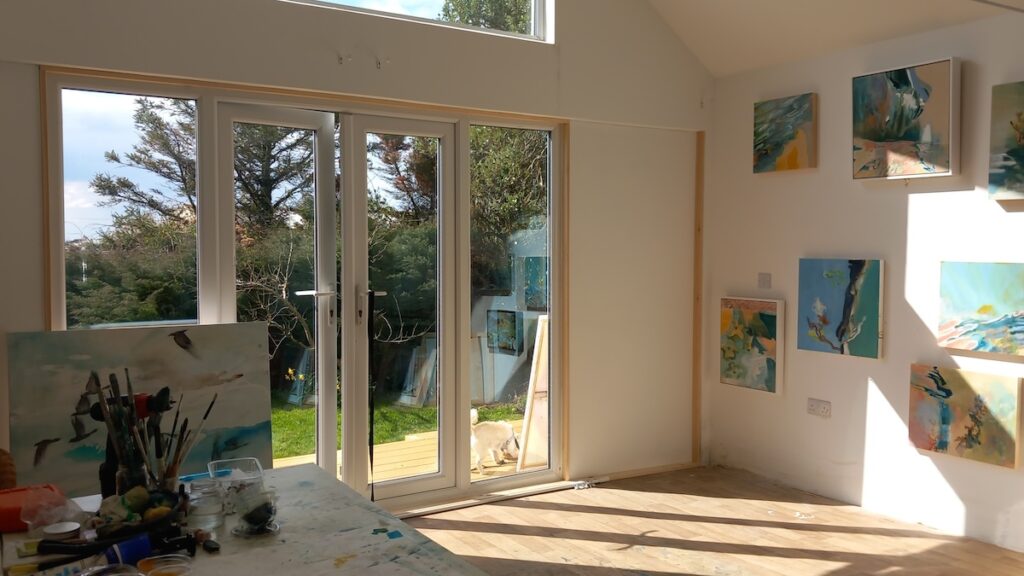
21. Use the supplies! Don’t save them for that never-coming day when you have all the skills and know for 100% sure you won’t waste anything. Waste isn’t waste; it’s part of learning. {That’s a truth you can choose.} Being precious with your materials won’t make you the artist you want to be.
22. Using your materials the ‘right’ way doesn’t matter. Unless it matters to your particular approach. Far more interesting is to use your artistic license and try things, see how materials work together, and then decide if you like it and want to do more of it.
23. Trust your weirdness. It’s what will make your art interesting and distinctively yours. It’s tempting to try and make art like so and so, but they’re already doing that, and we want to know what you have to say.
24. Complaining about lack of sales {or social media reach} won’t bring more sales {or more reach}. No one wants to hear an artist moaning about not selling anything or how the algorithm hates them; it’s more likely to prevent sales than generate them. Sorry. I know it’s really hard when you haven’t sold anything for ages, but use that energy to find new ways or places to sell, or to make new connections that can help you do that. {Which doesn’t mean you can’t have a moan privately! Still though, I’d keep that to a minimum and refocus on what IS working and what can help you get where you want to go.}
25. You might make your art alone, but you don’t have to be lonely in it. There are groups everywhere, online and offline. There are artists – and therefore potential artist friends – everywhere. It might take a few tries and a few disappointments, but if you keep persisting you’ll find people you vibe with for mutual support.
26. If you want to sell your art, think about what kind of person you are. Shy introvert? Maybe art fairs won’t be for you. Love organising? Start a local art group and put on exhibitions. Play to your strengths, and don’t worry about the things you don’t want to or feel able to do.
27. Experiment. With everything. Experiment with how you paint, when you paint, where you paint, what you paint with. {Insert whatever word fits your art if you’re not a painter.}
28. Experiment with where you sell, how you sell, when you sell. Some things will work, some won’t, some will work sometimes. We don’t have to rely on a single patron to support our art any more; we get to build something with multiple strands, and the ‘cost’ of that is that we do have to try things. Which can be challenging, and also fun.
29. How you think about your art and yourself as an artist is a much bigger part of the equation than you may realise. Pay attention to what you say to yourself and to others about your art or your status as an artist and notice where it’s not serving you. Then start to shift it. Get help with that if you need it.
30. Potentially controversial, and you can follow this rabbit hole down as far – or not – as you like, but at least look at your ‘why’ as an artist. It doesn’t have to be anything fancy or grand, but when you know why you make what you make, it can make a lot of the rest of it easier, from talking about it to people, to knowing what to make next, to knowing when a piece is finished. {Also you’ll need it for an artist statement, if you’re going that way.}
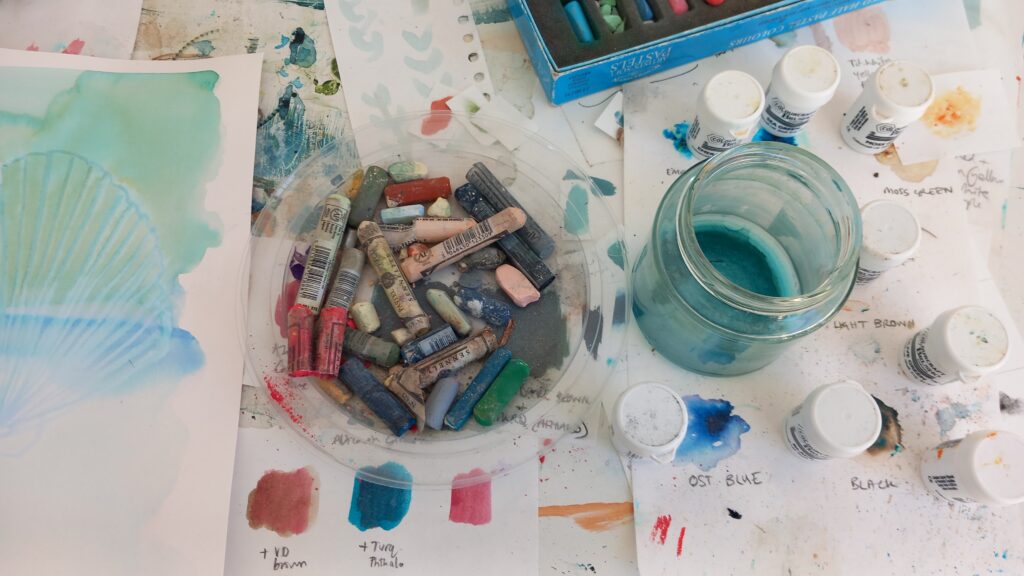
31. You are an artist in a context. By which I mean you are many more things than an artist, and being an artist must fit within the greater context of your life, alongside your other responsibilities, commitments, hobbies, relationships, and choices. When you remember that, it’s easier to be kinder to yourself when the art isn’t happening.
32. If you want to sell your art, you don’t need to be afraid of the business side of things. {Although it can absolutely feel daunting and it’s not wrong to feel that.} Business and marketing can be very creative activities, and there are plenty of people willing to help. Don’t assume it’s either/or. You can be an artist who makes art and an artist who sells their work. You will need to be able to manage your time though!
33. Just know that when you move into selling, it will change your relationship with your art. It doesn’t have to mean you start hating it, but making art for pleasure, and making art that you then sell, are two different things.
34. Making art for pleasure is not selfish, it’s quite probably a crucial part of maintaining your wellbeing. Like eating veg.
35. The art might go away, but it never goes away for good. You can trust that it’s only dormant, and will come back. It just typically can’t be active during survival periods, whether that’s mental health survival, physical health survival, or financially related survival. Get your basic needs met first, and the art will come back as soon as there’s room for it. {And it doesn’t need much.}
36. Ultradian rhythms are 90 minute hormonal cycles that happen in our bodies throughout the day. You can work with these to fit art into even a full life. When I started including 90 minute painting sessions into my week, it resulted in more art, more often, and more fulfillment and less resentment for me.
37. If you don’t like it, and/or it isn’t serving you – be it a material, a technique, a colour, an approach, a schedule, a mindset, a thought habit, a way of selling, or anything at all – stop doing it and find another way.
38. Work on trusting yourself and tapping into your intuitive feeling about things. This will help you with literally every aspect of being an artist, from finishing work to pricing, to advocating for yourself and your art.
39. Consider making your art in collections. It’s not for everyone, but it can make a huge difference to your output, the consistency of your aesthetic, the ability to sell it, and all sorts of other benefits.
40. Being an artist is not that special. 😱 Some of us are called to it, some aren’t. There’s a lot of mystery and drama surrounding it, but it’s much easier to get on with doing your thing and enjoying it if you realise it’s just one of infinite ways of being in the world.
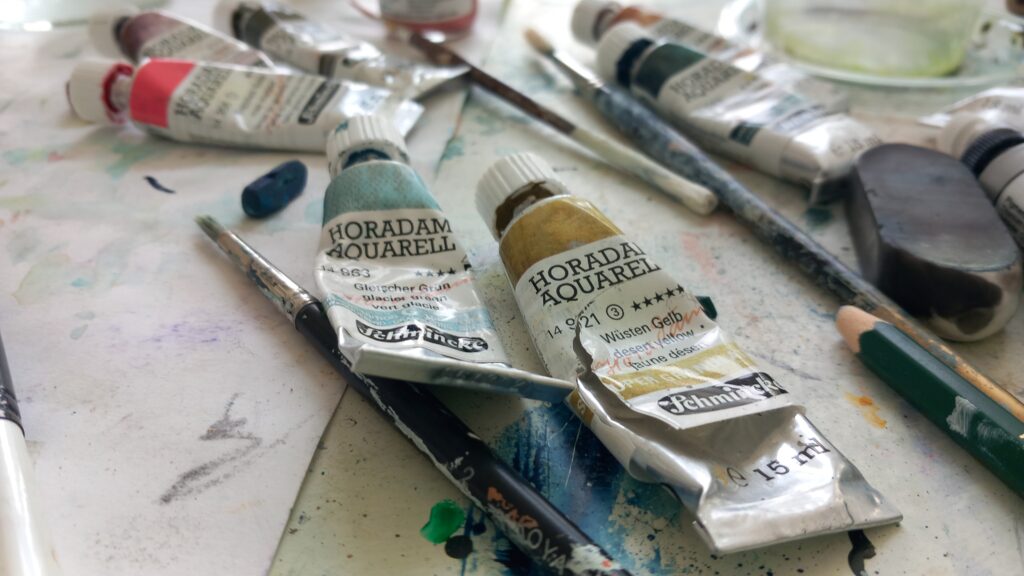
41. You don’t need a dedicated studio space to make your art. It’s a good idea if you do want to sell it, but it’s not essential for you to create. Many of us start on the kitchen table or in the spare room and slowly work towards the studio space.
42. When it comes to ‘art time’, remove every barrier to entry you come across. Duplicate items to keep in the studio if it’ll stop you ‘just going to get xyz’. Leave work unfinished so you know where you’ll start next time you go to create. Work on multiple pieces at once so you don’t get stuck and give up. Whatever you need, build it into your process so you get to do what you love more often, with more ease.
43. You will make ‘bad’ art. I don’t use the b word because I don’t think it’s helpful, {it’s also very arbitrary}, but it’s commonly used and I do agree with the sentiment. If you’re not prepared and willing to make art that is unfulfilling, inexperienced, not want you wanted to say, or otherwise ‘bad’, you’re going to really struggle to be an artist. It’s part of the deal, not a block. And when you stop thinking of it as ‘bad’, you can just get on with learning from it and making work that works better.
44. Most things take longer than you want them to. Getting ‘good’, developing your voice, making sales – if you’re prepared for it to take longer than you think it should, it won’t feel so long! Also, you know, the journey, and all that.
45. Be prepared to hear ‘no’. It can hurt, but it hurts less if you don’t put all your eggs in one basket. If you’re submitting to shows or open calls or galleries, know that it’s very normal to hear more nos than yeses {and also to hear nothing back at all}. This is not an indictment of you or your art; it’s much more nuanced than that. Many art opportunities have far more artists submitting than they can handle, and turn away art they love. It may be that your art isn’t ready yet, or that it wasn’t a good fit. The trick is to submit to multiple things, preferably forget about them till it’s time to find out the result, and keep making more art, so you have more to submit! No one opportunity is the only opportunity.
46. You and your art are in a relationship, and like all relationships it needs nurturing if it’s to be fulfilling and strong. Give it some quality time when you can, and it will pay you back tenfold.
47. Learn what inspires you and incorporate it into your life. The more inspiration you find, the more you’ll be motivated to create, and the more you’ll have to create with. Artist dates are a brilliant – and 100% customisable – way to do this.
48. Pricing your art is hard for basically everyone. I have yet to meet an artist who found it easy right off the bat. It does get easier though, once you have a repeatable process, and once you give more credence to yourself as an artist.
49. Try collaborating. It can be a very rewarding and educational {and sometimes challenging! But in a growth-inducing way} experience to work with another artist on something.
50. Life is short. Make your art. 😊👩🏼🎨
Got any lessons from the art studio of your own you’d like to share? Share them in the comments!

